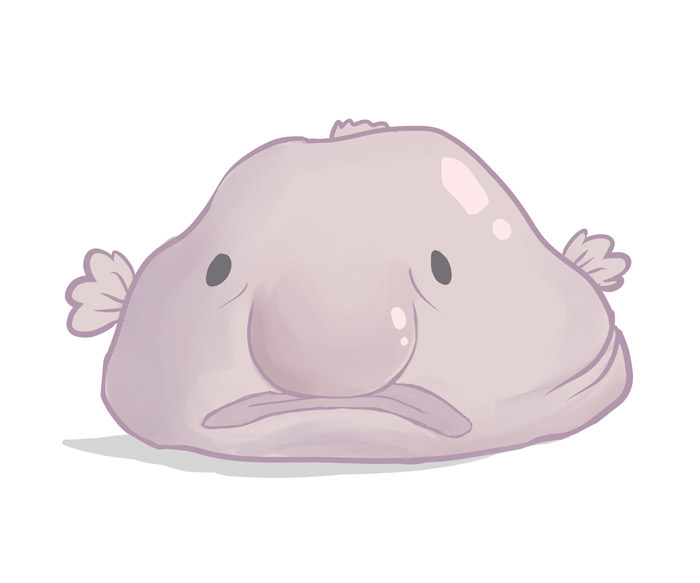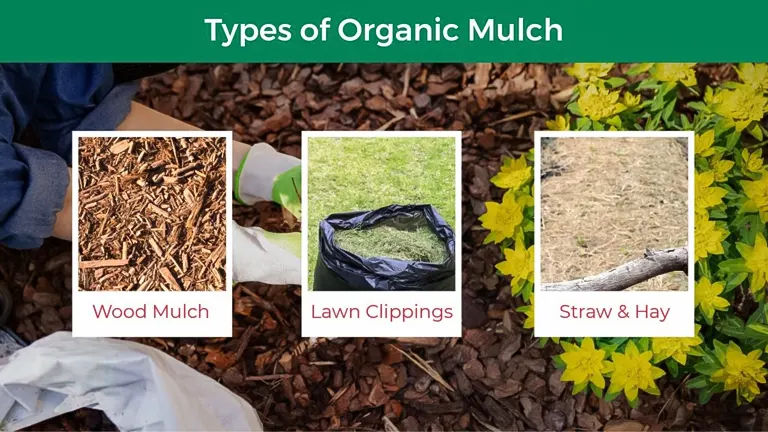Discover Pandipedia
Pandipedia is the world's first encyclopaedia of machine generated content approved by humans. You can contribute by simply searching and clicking/tapping on "Add To Pandipedia" in the answer you like. Learn More
Expand the world's knowledge as you search and help others. Go you!

Quantum mechanics is a fundamental branch of physics that explores the behavior of matter and energy at atomic and subatomic scales. Emerging in the early 20th century, it addresses phenomena that classical physics cannot adequately explain, fundamentally reshaping our understanding of reality.
Fundamental Principles

Quantum mechanics introduces several key principles that challenge classical interpretations of the physical world:
Wave-Particle Duality

One of the cornerstone concepts of quantum mechanics is wave-particle duality, which posits that particles, such as electrons and photons, exhibit both wave-like and particle-like properties depending on the circumstances of measurement. This duality was notably illustrated in the double-slit experiment, where particles create an interference pattern, indicating wave behavior when not observed and localized particle behavior when measured[7][1].
Quantization
In quantum mechanics, certain properties, such as energy and angular momentum, exist in discrete units called quanta. For example, light is emitted in packets known as photons, each containing a fixed amount of energy. This quantization leads to a state where objects can only maintain specific values of properties, unlike macroscopic objects, which can take on a continuous range of values[3][10].
Superposition

Another critical aspect is superposition, where a quantum system can exist simultaneously in multiple states until a measurement is made. This principle is famously depicted in Schrödinger’s cat thought experiment, which illustrates that until observed, a cat inside a sealed box can be considered both dead and alive[3][5].
Uncertainty Principle
![None Wavefunctions plotted in position and momentum space, showing that the two are conjugate variables as given by the Heisenberg uncertainty principle. Note the size of the errors \(\Delta x\) and \(\Delta p\) for each wavefunction [4].](https://ds055uzetaobb.cloudfront.net/brioche/uploads/GnS49vumsO-heisen.png?width=1200)
The Heisenberg uncertainty principle underlines the limitations of our knowledge in quantum mechanics, stating that certain pairs of physical properties, like position and momentum, cannot be precisely known at the same time. Measuring one property with high accuracy inherently restricts the precision of the other[4][9].
Entanglement
![None Quantum entanglement causes correlations in spin measurements too large to be classically explained [9].](https://ds055uzetaobb.cloudfront.net/brioche/uploads/gbKiVdJQsX-bell.png?width=1200)
Entanglement refers to a quantum phenomenon where pairs or groups of particles become interlinked, such that the state of one particle instantaneously influences the state of another, regardless of the distance between them. This results in correlations between measurements that defy classical intuition and has led to the term 'spooky action at a distance,' coined by Einstein[1][6].
Historical Context
![None Power distribution of radiation from a black-body according to the <strong>Planck's theory</strong> at different temperatures compared to the classical prediction [2].](https://ds055uzetaobb.cloudfront.net/brioche/uploads/0vWLFAcXMV-2000px-black_bodysvg.png?width=1200)
Quantum mechanics arose from the need to explain experimental outcomes that defied classical interpretations. Pioneering work by physicists such as Max Planck, who introduced the concept of quantization to solve blackbody radiation issues, and Albert Einstein, who explained the photoelectric effect using photons, laid the groundwork for this revolutionary field of study[3][5][9].
Mathematical Framework
![None Quantum tunneling gives particle wavefunctions a nonzero probability of penetrating a potential barrier [6].](https://ds055uzetaobb.cloudfront.net/brioche/uploads/dfth17fFRh-tunneling.png?width=1200)
The mathematical foundation of quantum mechanics primarily revolves around wave functions, which describe the probabilistic nature of outcomes for quantum systems. The wave function encodes information about a particle's position and momentum, evolving according to the Schrödinger equation. This framework emphasizes the probabilities associated with quantum states rather than deterministic values[4][10].
Implications and Applications
The implications of quantum mechanics extend into various fields, challenging traditional notions of reality and informing technological advancements. It is fundamental to quantum computing, where quantum bits (qubits) can represent both 0 and 1 simultaneously, vastly increasing computational power. Moreover, applications such as quantum cryptography and quantum sensing are paving the way for new technologies that leverage these unique quantum properties[6][7].
Quantum mechanics also has significant implications in condensed matter physics, where it informs our understanding of materials, chemical bonds, and even the behavior of neutron stars. Understanding quantum phenomena is essential for numerous technologies, from lasers and transistors to medical imaging devices, demonstrating its pervasive influence across disciplines[7][9][10].
Ongoing Research and Interpretations
Despite its successes, quantum mechanics remains a field of active research, with various interpretations concerning the nature of reality and measurement. Some challenges, such as the observer effect—where the act of measurement alters the system—continue to inspire debate among physicists[2][5]. As scientists explore the depths of quantum mechanics, new discoveries may further unravel the complexities of the universe.
In summary, quantum mechanics elucidates the intricate behavior of particles and energy at the smallest scales, offering a rich framework for understanding the universe while simultaneously raising profound philosophical questions about the nature of reality. Its principles have not only revolutionized physics but have also catalyzed innovations that continue to transform technology and society.
Let's look at alternatives:
- Modify the query.
- Start a new thread.
- Remove sources (if manually added).
- Request a manual search from our human research team.
Overview of the Class Action Complaint
Andrea Bartz, Charles Graeber, and Kirk Wallace Johnson, along with their loan-out companies, have filed a class action complaint against Anthropic PBC, alleging copyright infringement[6]. The plaintiffs claim that Anthropic built its multibillion-dollar business by illegally copying and using copyrighted books to train its Claude family of large language models (LLMs)[1][6]. The plaintiffs argue that Anthropic's actions compromise authors' ability to make a living, as the LLMs can generate texts that writers would otherwise be paid to create[6]. They contend that Anthropic has profited immensely from this copyright infringement, harming the market for authors' works[6]. Central to the case is the allegation that Anthropic knowingly used pirated materials, specifically the 'Books3' dataset, to train its models[6].
Defendant's Response and Fair Use Defense

Anthropic, while acknowledging it offers products based on LLMs, denies the core allegations of copyright infringement[7]. The company asserts that its use of copyrighted works falls under the protection of fair use, as defined in 17 U.S.C. § 107[5][7]. They argue that LLMs learn patterns and relationships within data rather than storing contents, and that the responses generated by LLMs are based on a predictive process, not verbatim copying[8]. Anthropic emphasizes that its AI models generate varied responses to similar prompts, highlighting the probabilistic nature of the technology[8]. A key point is to show using this technology is not about expression, but rather extracting statistical information from data[8]. Central to their defense is the claim that the training data is used to 'learn the patterns and connections between words,' similar to how humans learn[1]. Anthropic also disputes the plaintiffs' claim that their copyrighted works were actually used in training the AI models[7].
Jurisdictional and Procedural Matters
The plaintiffs assert that the court has subject matter jurisdiction under 28 U.S.C. §§ 1331 and 1338(a) because the action arises under the Copyright Act of 1976[1]. They also assert personal jurisdiction over Anthropic because it has purposely conducted business in the district[1]. Venue is claimed to be proper under 28 U.S.C. § 1400(a) and 28 U.S.C. § 1391(b)(2) due to Anthropic's infringing activities and commercialization of those activities within the district[1].
The court set a number of deadlines in a case management order, including:
Key Evidentiary and Legal Disputes
Several key legal and factual issues have emerged as points of contention between the parties [1 1]. These include:
- Whether Anthropic’s reproduction of copyrighted works constitutes copyright infringement[1]
- Whether Anthropic’s reproduction qualifies as fair use[7]
- Whether the plaintiffs can demonstrate harm and are entitled to damages[1]
- Whether Anthropic’s infringement, if any, was willful[1]
These issues also involve technical aspects of how LLMs function, source of training data, and the nature of the AI's output[8][7]. The court has emphasized the need for accurate briefing and representations from counsel, particularly regarding potential hazards to public health, safety, or well-being[3].
Electronic Discovery and Production
A central aspect of the case involves the discovery of electronically stored information (ESI)[9]. Key points regarding ESI include:
- The disclosure requirements obligate parties to disclose documents and witnesses on which they will rely[3].
- Producing parties must search all locations with a reasonable chance of having responsive documents, including both ESI and hard copies[3][9].
- Privilege logs must be promptly provided and sufficiently detailed to justify the privilege[3].
To facilitate the management of ESI, a specific protocol was established, addressing aspects such as data formats, metadata fields, and redaction[7][9]. A key component is to determine whether Anthropic used specific copyrighted materials, such as those in the Books3 dataset, for training its AI models[5]. The court stressed candidness in these matters[5].
Motions and Deadlines
Several motions and deadlines have been set forth, including a motion to dismiss[7] and a motion for class certification[4]. The court has emphasized that all filings must include the date and time of the hearing or conference[3]. Initially, there was a dispute regarding the order of hearing summary judgment and class certification motions.
Judge Alsup requires plaintiff’s counsel not to engage in any class settlement discussion until after class certification[2].
Judge Alsup also recognizes some form of pre-certification of settlement classes and recognizes there are circumstances where class members will be better served by class negotiations before certification[2].
In any such circumstances, counsel may apply to be “interim counsel,” and ask for express authorization to negotiate on behalf of a specified putative class[2].
The COVID-19 pandemic is no excuse to waive any local, federal, or court rules[3].
As of August 23, 2024, full settlement discussions at any time with respect to the individual claim are permitted[2]. Full settlement discussions as to class claims are permitted once those class claims are certified or interim counsel are appointed[2].
Protocols for Interviewing Class Members and Communications
The court requires both sides to promptly meet and confer and to agree on a protocol for interviewing absent putative class members[2]. In their joint case management statement due at the outset of the case, the parties shall either describe their agreed-upon protocol or explain why no such protocol is necessary in their particular case[2]. It has become a recurring problem in putative class actions that one or both sides may wish to interview absent putative class members regarding the merits of the case, potentially giving rise to conflict-of-interest or other ethical issues[2]. No interviews of absent putative class members may take place unless and until the parties’ proposed protocol is approved or permission is otherwise given[2].
Let's look at alternatives:
- Modify the query.
- Start a new thread.
- Remove sources (if manually added).
- Request a manual search from our human research team.
Get more accurate answers with Super Search, upload files, personalised discovery feed, save searches and contribute to the PandiPedia.

The blobfish appears distorted when taken out of its high-pressure deep-sea environment due to the difference in pressure[4]. Their gelatinous body becomes[4] misshapen and loses its defined shape when exposed to the low pressure at the ocean's surface. This is because their bodies are less dense than the water around them[1], allowing them to float along the sea floor without a swim bladder[1], and without the pressure from the surrounding water, their loose-fitting skin and soft structure cause[4] them to lose their true form[4]. Additionally, the fixation process during preservation in alcohol solution can further tighten the skin and contribute to the distortion of its appearance.
Let's look at alternatives:
- Modify the query.
- Start a new thread.
- Remove sources (if manually added).
- Request a manual search from our human research team.
Magical realism in literature is a genre that blends fantastical elements with ordinary life. It features ordinary characters whose lives intertwine with the extraordinary, creating a narrative where 'fantasy slips into everyday life' without being questioned or explained by the characters[3][4]. This style often serves as a powerful tool for sociopolitical critique, exploring themes like colonialism and identity while maintaining a grounding in realism[4].
The term was popularized by Latin American authors, notably Gabriel García Márquez and Isabel Allende, who incorporated elements of folklore and myth within their narratives[1][3]. Works of magical realism include 'One Hundred Years of Solitude,' where the extraordinary is treated as a natural part of life[1].
Let's look at alternatives:
- Modify the query.
- Start a new thread.
- Remove sources (if manually added).
- Request a manual search from our human research team.

ASMR (Autonomous Sensory Meridian Response) can be triggered by various sounds that induce relaxation and pleasurable tingling. Common auditory triggers include whispers, tapping, and crinkling sounds. For instance, the gentle sound of fingernails tapping on a surface and the soft rustle of paper can evoke tingling sensations, creating a calming experience for many individuals[2][4].
Other auditory triggers that people often respond to are brushing sounds, water sounds like rain or streams, and page turning[3][5]. These sounds, along with personal attention scenarios and role-play ASMR, contribute to the diverse array of stimuli that can elicit an ASMR reaction[1][4].
Let's look at alternatives:
- Modify the query.
- Start a new thread.
- Remove sources (if manually added).
- Request a manual search from our human research team.
Organic mulch
Made from materials like wood chips, straw, grass clippings, and compost, these mulches decompose over time, enriching the soil and providing nutrients for plants[1][3][4][5].

Shredded hardwood mulch
Attractive and biodegradable, it's suitable for perennial flower gardens and helps retain moisture while preventing weeds[2].

Dyed wood mulch
Offers bold color and works well for decorative purposes, but might not enrich the soil as it is chemically treated[2].

Pine bark nuggets
Lightweight and effective in retaining moisture, good for decorative uses around flowers, shrubs, and pathways[2].

Fresh wood chips
Can be obtained for free from tree removal services, effective for pathways and weed suppression[2].
Grass clippings
A source of nitrogen-rich mulch, though should be used with caution as they can mat down[2][3].

Pine straw
Lightweight and porous, effective for moisture retention and sunny spots, but may not prevent weeds without additional layers[2][3].


Rubber mulch
Retains moisture and suppresses weeds, made from recycled tires, but does not enrich soil[4].


Plastic sheeting
Used to suppress weeds effectively, but can lead to watering challenges for plants[5].

Wood mulch
Made from timber wood chip, it improves soil structure and helps with weed control when layered appropriately[3].
Mushroom compost
Alkaline and light, excellent for lime-loving vegetables but should be avoided around acid-loving plants[4].
Shredded rubber mulch
Provides moisture retention and weed suppression but use with caution due to potential chemical leaching[4].
Let's look at alternatives:
- Modify the query.
- Start a new thread.
- Remove sources (if manually added).
- Request a manual search from our human research team.
Get more accurate answers with Super Search, upload files, personalised discovery feed, save searches and contribute to the PandiPedia.
I apologize for the inconvenience, but it appears that the information from The Kitchn is not accessible at the moment. However, I can provide you with a general outline of the steps and ingredients required to make chicken biryani:
Ingredients for Chicken Biryani:Steps to Make Chicken Biryani:
1.
In a bowl, combine the chicken pieces with yogurt, ginger-garlic paste, red chili powder, turmeric powder, biryani masala powder, and salt. Mix well and let it marinate for at least 1 hour (or overnight in the refrigerator) for the flavors to develop.
2.
Wash and rinse the basmati rice under cold water until the water runs clear. Soak the rice in water for 20-30 minutes. In a large pot, bring plenty of water to boil and add salt. until 80% cooked (still slightly firm), then drain and set aside.
3.
Heat ghee and oil in a deep pan or pot. Add the sliced onions and cook until golden brown. Add the marinated chicken and cook until it is about 70-80% done. Remove the chicken pieces and set them aside.
4.
In the same pan, add a layer of cooked rice, followed by a layer of cooked chicken and some chopped mint and cilantro leaves. Repeat the layers with the remaining rice and chicken. Finally, sprinkle some garam masala powder on top.
5.
Cover the pot with a tight-fitting lid or seal it with aluminum foil. Place the pot over low heat and let it cook for about 20-25 minutes. This helps to steam the rice and infuse the flavors.
6.
Once done, gently fluff the rice with a fork, making sure not to break the grains. the chicken biryani hot with raita (yogurt dip), pickle, or salad.
Please note that this is a general guideline, and you can adjust the spices and ingredients according to your taste preferences.
Let's look at alternatives:
- Modify the query.
- Start a new thread.
- Remove sources (if manually added).
- Request a manual search from our human research team.

In 2023, Google generated over $175 billion from search, which represented nearly 57% of its total revenues, and its search revenues contributed to more than 72% of the total revenues for Alphabet, Google's parent company[2][3]. Additionally, Google made a total revenue of $307.39 billion, which included significant contributions from its search and advertising services[3][5].
This indicates that a substantial portion of Google's income is derived from its search operations, highlighting its dominance in the digital advertising space.
Let's look at alternatives:
- Modify the query.
- Start a new thread.
- Remove sources (if manually added).
- Request a manual search from our human research team.

To start journaling effectively, choose a method that fits your preferences. You can try freeform journaling, where you write whatever comes to mind, or guided journaling, which provides prompts to stimulate your thoughts[4][6]. Establish a consistent routine by setting aside time daily or weekly, making it part of your self-care routine, and keeping your journal handy for spontaneous entries[3][4][6].
Remember, there’s no right or wrong way to journal. Focus on your feelings and experiences, and let go of the pressure to write perfectly[1][5]. If you get stuck, use prompts to kickstart your writing and encourage creativity[2][3][5].
Let's look at alternatives:
- Modify the query.
- Start a new thread.
- Remove sources (if manually added).
- Request a manual search from our human research team.

The 80/20 rule, also known as the Pareto Principle, is the observation that roughly 80% of consequences come from 20% of causes. This principle suggests that a minority of inputs or efforts often leads to the majority of results in various domains, such as business, economics, and quality control. For example, 80% of a company's revenue might come from just 20% of its customers[1][2].
Originally noted by Vilfredo Pareto regarding wealth distribution in Italy, the principle was later developed by Joseph Juran, who applied it to quality management. Juran emphasized focusing on the 'vital few' causes that yield the most significant outcomes, enhancing efficiency and effectiveness in work processes[3][4].
Let's look at alternatives:
- Modify the query.
- Start a new thread.
- Remove sources (if manually added).
- Request a manual search from our human research team.























